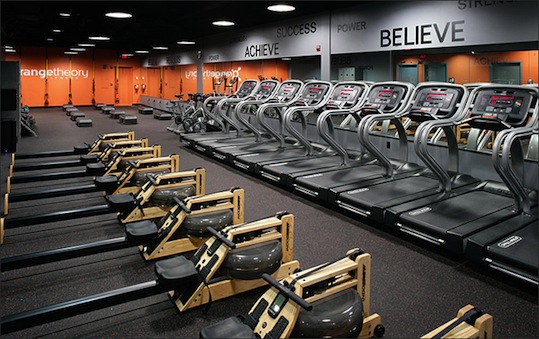
The grass is green, the flowers are blooming, and spring is here. It's that time of year where many Valley women are working hard on getting that bikini body ready for the season, but what most women don't know is that their workout could actually be doing more harm than good to their bodies.
A personal trainer and studio trainer from Orangetheory Fitness Paradise Valley, Daren Wade Parks, MS, offers common fitness mishaps, and helpful tips for a woman’s workout.
Biggest Mishaps:
1. Many women place too much emphasis on aerobic activities and not enough on strength training.
Many women fail to realize the value of strength training. Effective strength training should be done with the proper weight or load/intensity sufficient to produce results. Sets of 20-30 repetitions using three-pound dumbbells are ineffective. Lifting challenging loads for eight-10 repetitions maximum (RM). What does that mean? Repetition maximum refers to the maximum number of repetitions that you can perform with a given load while still maintaining proper form and technique. You should struggle (with proper form) to complete the last couple of repetitions in each set. I have always used the training philosophy “If you can’t feel it, it’s not working.”
Contrary to popular belief, strength training, especially at higher intensities, promotes something called excess post-exercise oxygen consumption (EPOC). Sometimes referred to as "afterburn," EPOC is basically an increased rate of oxygen intake following strenuous activity. During the post-workout recovery process, excess oxygen is used to facilitate all of the processes that restore your body back to its resting state and to help it adapt to the exercise (stress) just performed. The "afterburn" also fuels your metabolism to return your body temperature and heart rate back to its pre-exercise state. Some research shows that this increase in resting metabolic rate can last up to 72 hours after your workout is over, with 24-48 hours being more the norm. Higher metabolic rate means more calories burned, so if changing body composition is your goal, strength training is key to success. It’s also important to remember that lean muscle tissue is very metabolically active (it burns calories at rest). The more lean muscle tissue you have relative to your overall body composition, the greater your potential to burn more calories. Orangetheory Fitness offers high-intensity resistance training, as well as heart-rate based interval training. Cardiovascular interval training defined and performed as using short duration, high-intensity bouts of exercise followed by recovery. Cardio interval training is extremely beneficial because it burns an abundance of calories during the exercise session itself and is very effective in promoting the process of EPOC.
2. Many women lack the understanding that diets rich in protein are an essential part to achieving overall fitness results.
Research shows that 10 percent of women don't even get the recommended dietary allowance (RDA) of 46 grams of protein per day. To optimize your body composition, you should aim to double that amount. Losing weight requires a balancing act of ensuring protein needs are met, safe caloric deficits are achieved and workout intensities are efficient. One study from the University of Illinois found that when women doubled their protein intake (twice the RDA for protein), they lost more body fat and experienced a greater improvement in body composition than those who followed a lower-protein diet. Another study from Purdue University found that women report being less hungry throughout the day when eating a high-protein diet. It's tough to find a reputable study that doesn’t support women eating more protein. Aim to include a protein source (eggs, chicken, fish, lean beef, Greek yogurt, etc.) in every meal and snack. General recommendations for protein for weight loss are anywhere from 1-1.5grams/protein per kg body weight. For example, a female weighing 130lbs/2.2 = 59kg x 1.2grams/protein = 70grams/protein per day. Protein/amino acids are essential in the diet for the repair and growth of tissue.
